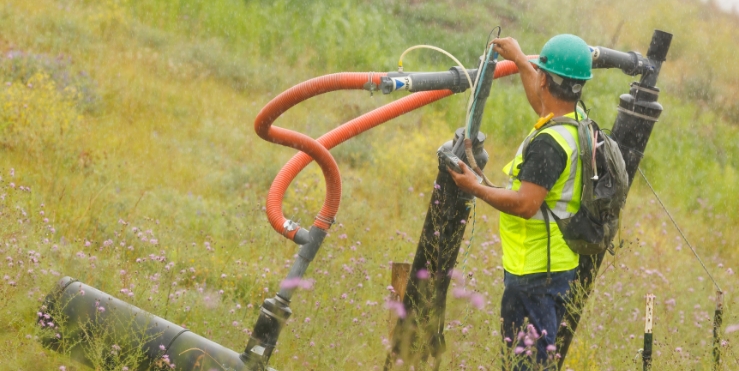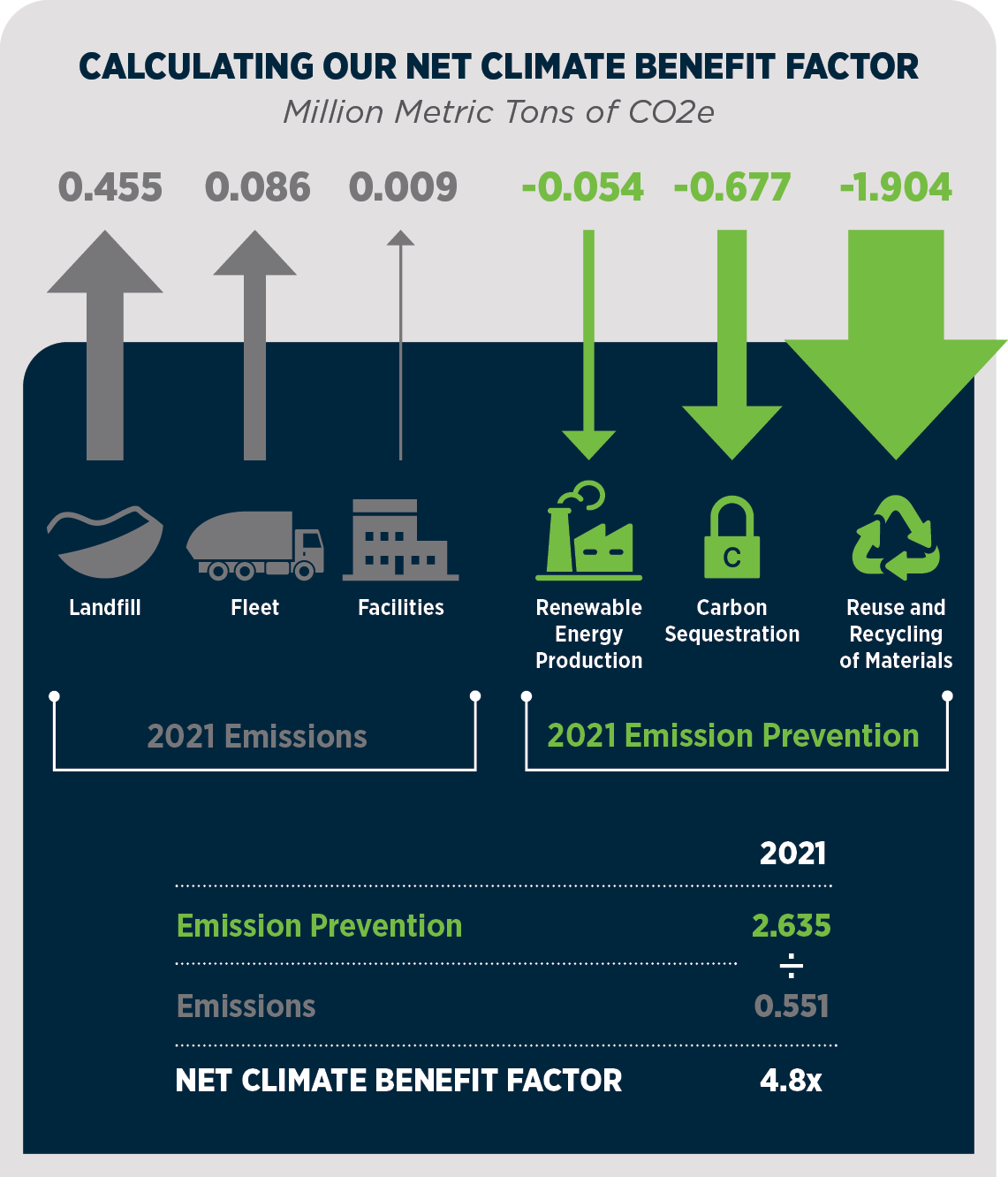Climate Leadership
- Sustainability
- Climate Leadership
Emission Reductions

Between 2005 and 2010, we reduced our Scope 1 and 2 greenhouse gas (GHG) emissions by 45%. Our goal is to reduce our emissions by another 40% below 2010 by 2030.
Most of our emission reductions have been achieved at our landfills, where our operating teams work each day to reduce the carbon footprint of society’s unrecycled waste.
To control landfill emissions, we focus on engineering design and daily operations. The engineering design elements vary from site to site and may include the timing of activating new collectors, establishing intermediate vegetated soil covers, deploying temporary geomembrane capping, and accelerating final capping schedules where possible. The operational elements include a combination of well-field tuning, maintenance of gas infrastructure, and maximizing the uptime of flares and engines.
In recent years, we have seen advancements in methane monitoring technology, including drone-, airplane-, and event satellite-mounted methane detection. This year, we are deploying drone technology to help us further refine and optimize our facility-level landfill gas control strategies. Over time, we hope this type of technology will also help to improve the precision of landfill gas emission modeling and measurement.
In 2021, modeled fugitive landfill emissions made up roughly 80% of our Scope 1 and 2 inventory, with our fleet and facilities making up the remainder. Our work to cut fuel usage and vehicle emissions is detailed in the Sustainable Operations section of this 2022 sustainability report.

Net Climate Benefit
For every metric ton of greenhouse gas we emit through our operations, we prevent 4.8 metric tons of greenhouse gas emissions throughout the economy, through the recycling, energy, and carbon sequestration services we provide based on data related to our operations in 2021.
In other words, landfill gas management and fuel conservation are not all we have to offer in combatting global climate change. We can also benefit the climate by growing our recycling services, producing more renewable energy, and sequestering more carbon, which aligns well with our business model.
Our comprehensive approach to increasing our Net Climate Benefit includes five elements:
-
Recycling and Circular Economy: Grow our waste reduction, reuse, and recycling services which can support the emerging circular economy and reduce supply emissions.
-
Landfill Gas Management: Reduce emissions at landfills through facility engineering, operations, and innovation.
-
Fuel Efficiency: Reduce emissions from trucks through automation, technology, and other fuel efficiency measures and, over time, select investment in alternative fuel vehicles.
-
Carbon Sequestration: Understand and enhance the many ways that our services sequester biogenic carbon thus reducing carbon in the atmosphere.
-
Renewable Energy: Convert carbon from biomass to renewable energy in forms that best support our communities in transitioning to renewably powered economies.
To summarize our full range of climate reducing activities, we track our Net Climate Benefit, which is a ratio that we calculate by adding the emission benefits of our recycling, renewable energy, and sequestration activities and then dividing this number by our total Scope 1 and 2 emissions. These calculations are completed using EPA factors and tools. For more information Click Here.
Our 2019 and 2020 Net Climate Benefit calculations accounted for a portion, but not all, of our recycling, energy, and sequestration activities. For our 2021 inventory, we have expanded the calculation to incorporate additional materials such as industrial recycling and biosolids. For the latter we supplemented EPA factors with factors from the widely acknowledged Biosolids Emissions Assessment Model (BEAM). With these changes, our Net Climate Benefit Factor now provides a more complete accounting of our organization’s net climate benefit.


Planning & Resilience
Rising to the global climate challenge requires that we simultaneously reduce our operational emissions and grow our emission-reducing services, as described above. Like all other organizations today, we can also take steps to prepare and adapt our business for the effects of climate change.